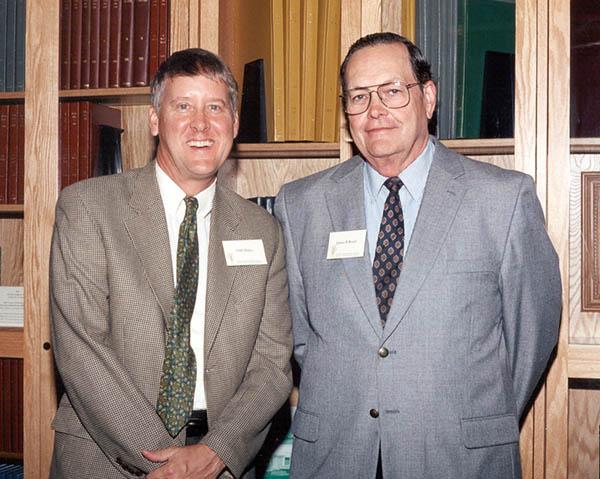Joe Vargas learned early in his Michigan State career not to question Jim Beard, much less make a bet with him.
 Vargas had just started his new job as a professor in the Michigan State turf program in 1968, when Beard, the program's patriarch, ordered him along to help check snow mold research plots in northern Michigan. After they arrived in the Traverse City area, Beard expressed concern about some of his plots and whether water would be able to penetrate sand showing signs of hydrophobicity.
Vargas had just started his new job as a professor in the Michigan State turf program in 1968, when Beard, the program's patriarch, ordered him along to help check snow mold research plots in northern Michigan. After they arrived in the Traverse City area, Beard expressed concern about some of his plots and whether water would be able to penetrate sand showing signs of hydrophobicity."I told him anything would pass through sand," Vargas said.
Beard disagreed, and proposed a wager. The loser would buy a bottle of wine at dinner.
"Well, you know who bought that bottle of wine," Vargas said. "I didn't even have my first paycheck yet. It was about $20 for that bottle, and it was probably all the money I had in my pocket."
After that day, the two worked side by side for the next seven years. Vargas learned a lot in that time, including the importance of listening.
Beard taught and toiled at Michigan State from 1961 to 1975 and is credited with building the program into what it is today, died May 14. He was 82.
A native of Bradford, Ohio, a rural community northwest of Dayton, Beard graduated from Ohio State in 1957 and went on to earn masters and doctorate degrees from Purdue. After building the Michigan State program into one of the country's top turf schools, he spent nearly 20 years at Texas A&M. While in College Station, he founded the International Sports Turf Institute and served as its director and chief scientist for years.
Throughout his career, he authored several books, including Turfgrass Science and Culture, which Karl Danneberger, Ph.D. of Ohio State called "the Bible for turfgrass managers. With the help of wife Harriet, who typed all his handwritten notes, Beard also authored more than 900 technical papers and peer-reviewed articles detailing the results of his research, and helped raise the level of turfgrass education and research along the way. He eventually donated his volumes of work to MSU's Turfgrass Information Center.
"He put the word science into turfgrass science," Danneberger said. "He did quality work, and he expected others to do quality work as well."
Danneberger recalls a time when Beard refused to sign off on peer-reviewed research that he didn't believe was up to par.
"As you can imagine, it rubbed some people the wrong way," Danneberger said. "But, he raised the quality of work in turfgrass research for everybody."
As you can imagine, it rubbed some people the wrong way. But, he raised the quality of work in turfgrass research for everybody."
Al Turgeon, Ph.D., professor emeritus at Penn State, remembers going along on some of those drives into northern Michigan to examine research plots during his days as a graduate student at Michigan State. He recalls an atmosphere of professionalism, camaraderie and respect in the MSU program under Beard, the likes of which he had not seen before or since.
"He brought a level of sophistication to research and education that was unique," Turgeon said.
"You didn't have to go to his office and kiss his ring. He came to see you to see how things were going and to offer help and advice.
"When we would make the drive to his plots, we all behaved liked colleagues. We would go out to dinner together and discuss issues on a first-name basis. It was a wonderful experience for someone who wanted to be a turfgrass academic. I have very fond memories of the collegiality that characterized that era at Michigan State."
To illustrate his demand for excellence and attention to detail, Beard was a taskmaster in how he ran field days and the Michigan Turfgrass Foundation annual conference. Field days included practice session in advance of the live event.
"Everyone had a job and we practiced it," Turgeon said. "It was very professional."
Added Vargas: "He ran everything. We had no idea how much he did until he left and we then had to do it."
His legacy includes the Turfgrass Information Center and an expectation of excellence in the classroom and the field that continues today.
"Dr. Beard influenced generations of students and young scientists with his many books, papers.and presentations, as well as his encyclopedic knowledge of Turfgrass Science," said Bruce Clark, Ph.D., of Rutgers University. "He was a good friend, mentor, and role model who set the bar exceptionally high. He will be sorely missed."

